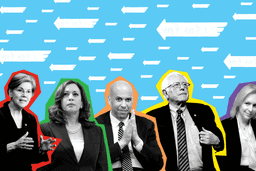Storming the Corporate Castle: Does Shareholder Activism Work?
Shareholder activism has sparked major wins for progressives, but the strategy has also spurred debate.
Theo Anderson

These are strange days indeed for shareholder activism. By some measures it’s experiencing a surge. Progressive groups have used the strategy since the early 1970s, but the past few years have seen an increase in its frequency, sophistication and success. In December, for example, the defense contractor Northrop Grumman announced that it would immediately end its membership in the American Legislative Exchange Council (ALEC), a key player in the push to privatize education and a purveyor of climate-change denial. The move came in response to a shareholder resolution filed by an activist group that owned stock in the company. More than 100 companies have withdrawn from ALEC over the past four years, many under shareholder pressure.
Shareholders have also been a critical part of the broad coalition that has taken on Walmart for practices ranging from low pay to unfair demands on pregnant workers. Walmart adamantly denies that the work of activists has any influence on its decision-making, but in February it announced that its base pay rate would increase to $9 this spring and to $10 early next year. The company has also promised to accommodate pregnant workers.
Shareholder activism is premised on the idea that capitalism contains the seeds of its own reform. Owning stock gives shareholders a voice in deciding a company’s policies — and since most shareholders are passive, a highly motivated minority can have an outsized influence.
Sixteen such resolutions were aimed at Walmart in the past decade — out of about 350 “human capital management” resolutions in all, according to Reuters—and they appear to be escalating in number. Shareholders have already proposed several in 2015, including one from Connecticut Treasurer Denise Nappier asking Walmart to tie executive incentive pay (which is based on performance) to the happiness and productivity of its low-wage workers.
Conservatives have noted the tactic’s power and potential, and they are sounding the alarm. In a 2011 report on “Activist Investing in Post-Citizens United America,” the right-wing Center for Competitive Politics warns that shareholder activists “see for-profit corporations as their political enemy, and seek partisan or ideological advantage by squelching corporate political speech.”
In 2013, the U.S. Chamber of Commerce took another tack. It released a study suggesting that union-backed shareholder activism punishes “the millions of individuals who rely on these investments for retirement,” including union members, because it doesn’t increase the value of a company’s stock.
But for all the reaction it provokes among conservatives, some progressives doubt the power of shareholder activism to deliver genuine structural changes. After all, it relies on pragmatism and “constructive engagement” in dealing with corporations whose core mission progressives often oppose. And there are other limits to its appeal. It doesn’t have the visibility of mass marches and protests, and doesn’t usually achieve quick results.
It is one of the more interesting questions of this political era whether progressives will continue to expand a promising strategy that is successful enough to cause concern among conservatives, but sometimes cuts against the grain of their own beliefs.
It’s all about the image
The resolution that motivated Northrup Grumman to withdraw from ALEC in December was proposed by a politically progressive congregation of Catholic sisters in Fond du Lac, Wisconsin. If the resolution had actually gone to a vote by shareholders, it probably would have failed. Only 21 percent of shareholders vote in favor of resolutions, on average.
But the point is not to win a majority. That threshold has little meaning, since resolutions are non-binding. The point is to win enough votes to get the attention of the company’s leaders and move them to make reforms. The tipping point varies widely from case to case. Sometimes it’s 10 percent. Sometimes a majority isn’t enough.
“The power we have is the reputational risk,” says Laura Berry, executive director of the Interfaith Center on Corporate Responsibility (ICCR), which engages with corporations to promote more sustainable and just practices. ICCR’s nearly 300 member organizations have both a moral and financial stake in corporate behavior. They consist mainly of religious institutions (such as the Fond du Lac nuns), but also include pension funds, socially responsible investment firms, unions and academic institutions.
“Companies don’t like these issues being brought to the attention of all institutional shareholders,” Berry says. “They will often agree to make change so that we will withdraw our proposal and it will not appear on the ballot. And that’s where you see the power of shareholder activism.”
In 2011, for example, the Oakland-based shareholder activist organization As You Sow filed a resolution asking McDonald’s to replace its foam beverage cups with more eco-friendly paper cups. The resolution went to a shareholder vote and got nearly 30 percent approval. In 2012, As You Sow filed the same resolution — but withdrew it when the company took steps toward adopting the policy. A year later, McDonald’s announced that it would begin using paper cups in its 14,000 U.S. stores.
When proposals do go to a vote, proponents can make a presentation at the company’s annual shareholder meeting, which “can sometime be an uncomfortable moment for the company,” Berry says.
People for the Ethical Treatment of Animals (PETA) employs this strategy aggressively. It holds stock in more than 80 companies and makes graphic presentations at shareholder meetings about the abuse of animals. When SeaWorld made an initial public offering in 2013, PETA bought shares, promising to “educate stockholders about how marine parks tear orcas and dolphins away from their homes and families and imprison them in minuscule concrete tanks.” Last year, it filed a resolution proposing that SeaWorld retire its animals to sanctuaries in the ocean.
Sometimes, rather than either resisting a resolution or conceding quietly to avoid a shareholder vote, companies endorse it and send it to a vote. But the motivation is often unclear: Is it genuine reform or a marketing ploy?
This year, for example, both Royal Dutch Shell and British Petroleum (BP) endorsed resolutions that require the companies to reduce greenhouse gas emissions, invest in renewable energy and “stress test” their business models against the goal of limiting global warming to 2 degrees Celsius. Achieving that goal will mean that much of the oil companies’ assets untapped, or “stranded” — with profound consequences for their long-term business models.
As You Sow was part of the coalition that filed the resolutions. Its CEO, Andrew Behar, said, “This is the beginning of the ‘supermajors’ — the biggest oil companies in the world — realizing that they need to be part of the future. We’ll see what they actually do. But if they just remove themselves from blocking political change, that’s huge.”
Shell and BP reaped a windfall of positive media coverage for their decision to proactively embrace the proposal. But there is good reason for skepticism about the depth of their commitment. BP in particular has a history of casting itself as ecofriendly while pursuing distinctly anti-environmentalist policies. And conceding to a resolution often requires little from companies in terms of enacting actual reforms.
Consider the case of the oil company ConocoPhillips. It has been targeted by shareholder activists since the early 2000s, and it has consistently indicated its commitment to addressing climate change by reducing its greenhouse gas emissions. Setting actual targets toward that goal, however, has been another story. In 2014, As You Sow filed a resolution noting that “no targets for reductions have been established after all this time, and there appears to be no timeline for setting one.”
“The company told us in 2003 that it intended to set targets to reduce greenhouse gas emissions, but to this day they have not set a company-wide target, and in fact, now openly disavow that approach,” says Shelley Alpern, director of social research and shareholder advocacy with the investment advising firm Clean Yield Asset Management. Alpern helped file resolutions that targeted ConocoPhillips in the early 2000s.
“Engagement succeeds when we can make a persuasive case that change will enhance shareholder value [or] reduce business or reputation risk,” she recently wrote, reflecting on her experience with oil companies. But “as engagement with tobacco companies demonstrated, it … will not work when the goal is to change the core business model of a company.”
Taking on polluters and dirty money
The use of shareholder resolutions by progressive groups dates to the early 1970s, when a federal court ruling prompted the Securities and Exchange Commission (SEC) to begin allowing socially and politically oriented shareholder resolutions, which it had previously rejected. Founded in 1971, ICCR was a pioneer of the practice, which it used as a tool against apartheid in South Africa. Calvert Investments was the first mutual fund to use the strategy, filing a resolution relating to a labor dispute in 1986.
Progressive shareholder activism has evolved rapidly in the past decade, and the number of resolutions has grown steadily. There were a record 454 socially and environmentally focused resolutions filed in 2014 — about 50 more than in 2013, according to the nonprofit Sustainable Investments Institute.
More than half of the resolutions filed last year targeted investment groups and pension funds. Environmental issues and getting corporate money out of politics were the highest priorities by far. Last year, nearly 40 percent of the resolutions related to climate change, sustainable governance, renewable energy and other environmental issues, while 30 percent had to do with corporate political activity.
These issues sometimes intersect. Investors asked 24 companies to disclose their ties to ALEC, for example, and some resolutions—like one targeting Google—argued that ALEC’s climate-change denial contradicted the company’s support for renewable energy.
Google opposed the resolution, which received only 8.6 percent of shareholder support. But last September, Google Chairman Eric Schmidt said on NPR’s Diane Rehm Show that ALEC was “literally lying” about climate change and “making the world a much worse place … so we should not be aligned with such people.” Schmidt did not say whether the resolution factored into Google’s decision to withdraw from ALEC.
About 40 percent of filed resolutions are withdrawn — mainly because the target concedes or agrees to negotiate. But, by and large, corporations are more likely to give way on environmental issues than on challenges to their political activity. About 43 percent of environment-related resolutions were withdrawn between 2011 and 2013. Only 25 percent of those focused on corporate politicking were withdrawn.
Slow and steady
Ease of entry is one reason for the rising tide of shareholder activism. An individual or organization needs to own just $2,000 worth of a corporation’s stock for a year to file a resolution. Companies can appeal to the SEC for a ruling on whether the resolution is relevant to its business, but the majority are ultimately approved.
Shareholder activism is also gaining momentum because it does actually create reforms — though, as with the oil companies, the process can be slow and vulnerable to co-optation.
Anecdotal evidence of its power has been supplemented by an emerging body of scholarly work on the ways that activism changes corporate behavior. For example, recent research by business professors at Northwestern, Stanford and Georgetown universities drew on ICCR’s archive of shareholder resolutions, as well as a database of boycotts. They found that corporate reform is a fluid, long-term process, in which pressure on companies gradually opens up new opportunities for activists to exploit.
It does so by motivating companies to create tools to respond to the activists’ demands. These tools often include, for example, a committee on social responsibility and a report on the company’s commitment to sustainability, which slowly bring the perspectives and presence of activists into the culture — and transform the company.
Nike is the classic example. Activists targeted it for relying on sweatshop labor through much of the 1990s. The company fiercely resisted, but high-profile protests on college campuses in the late 1990s motivated it to initiate reforms, including a code of conduct and factory inspections to ensure compliance. In 2001, Nike established a corporate responsibility committee and began issuing reports reviewing its own labor and environmental practices. Openness to shareholder activism and pursuit of a sustainable business model gradually became key elements of the company’s identity. Ethical Consumer, a British watchdog organization, recently gave Nike its highest rating in the category of supply chain management, though it noted that violations of workers’ rights were still common in some of its factories.
The same sort of long game is now going on at Wells Fargo — and there, shareholder activists are playing a high-profile role. The bank made headlines in 2012 for blocking certain shareholders from entering its annual meeting in San Francisco, citing space concerns. The activists, many of whom were part of the Occupy movement, had targeted the bank for its lending and foreclosure policies, among other concerns. Some were arrested.
Wells Fargo moved its 2013 meeting to Salt Lake City in the wake of that public-relations disaster. The same year, ICCR members filed a resolution asking for a report about the impact of the bank’s “Direct Deposit Advance” — a product similar to a payday loan — on customers. Wells Fargo challenged the proposal, and the SEC ruled in its favor. But in November 2013, ICCR members submitted an amended proposal, asking Wells Fargo to prevent predatory lending by changing its policies. In January 2014, the bank agreed to discontinue Direct Deposit Advance. The ICCR members withdrew their resolution.
The victory was typical of shareholder activism. It took years to bear fruit, it helped motivate a major corporation to make a concrete reform, and its larger import is open to debate. Perhaps it amounts to little more than one company ending one policy. On the other hand, perhaps it signals momentum toward broad reform within a major corporation, with wide-ranging implications that are still unknown.
To invest or divest?
Right-wing organizations are not the only voices of protest against the growing use of shareholder activism by progressive groups. In a speech last spring, SEC Commissioner Daniel Gallagher, lamented that the shareholder proposal process had been “hijacked” by people with “idiosyncratic and often political agendas.” He quipped that perhaps the threshold for submitting a proposal should increase from $2,000 worth of stock to $2 million to solve the problem.
And some progressives have reservations about shareholder activism’s incremental method, because it doesn’t have the same impact as outright divestment.
“It’s big news when companies divest,” says Howie Hawkins, an activist based in Syracuse, New York, who was the Green Party candidate for governor in 2014. “When there’s a shareholder resolution, you don’t see that in the news, so it doesn’t have the same political impact.”
Alpern, of Clean Yield, believes that the urgency of addressing climate change means that “the time for polite conversation [with the oil companies] is over.”
“We need them to turn on a dime,” she says. “And all of their pronouncements are based on their premise that world demand for their products will continue increasing for several decades. And none of them recognize that they will need to delay or not produce the majority of their reserves.
“I rarely advocate for divestment, because it’s often possible to succeed in encouraging incremental but meaningful improvements. But incremental change on this issue is no longer good enough.”
For those who still believe in the power of engaging with oil companies, Alpern advocates near-divestment— owning just enough stock to file resolutions and attend annual meetings.
That strategy likely will not score the victories equal to the task of addressing climate change, and it is a fair question whether total divestment packs the most powerful punch. But advocates for shareholder activism see little tension between the two courses. They ask: Given the scale of the challenges, why not use every option available?
“We’re not the kind of activists who are just here to make noise,” says ICCR’s Berry. “And those activists are very important, let me say. But we are folks who do our homework and just plug away and plug away. … It’s not for everybody, but we think it’s an important tool in a multilateral approach to changing some of the world’s most intractable problems.









